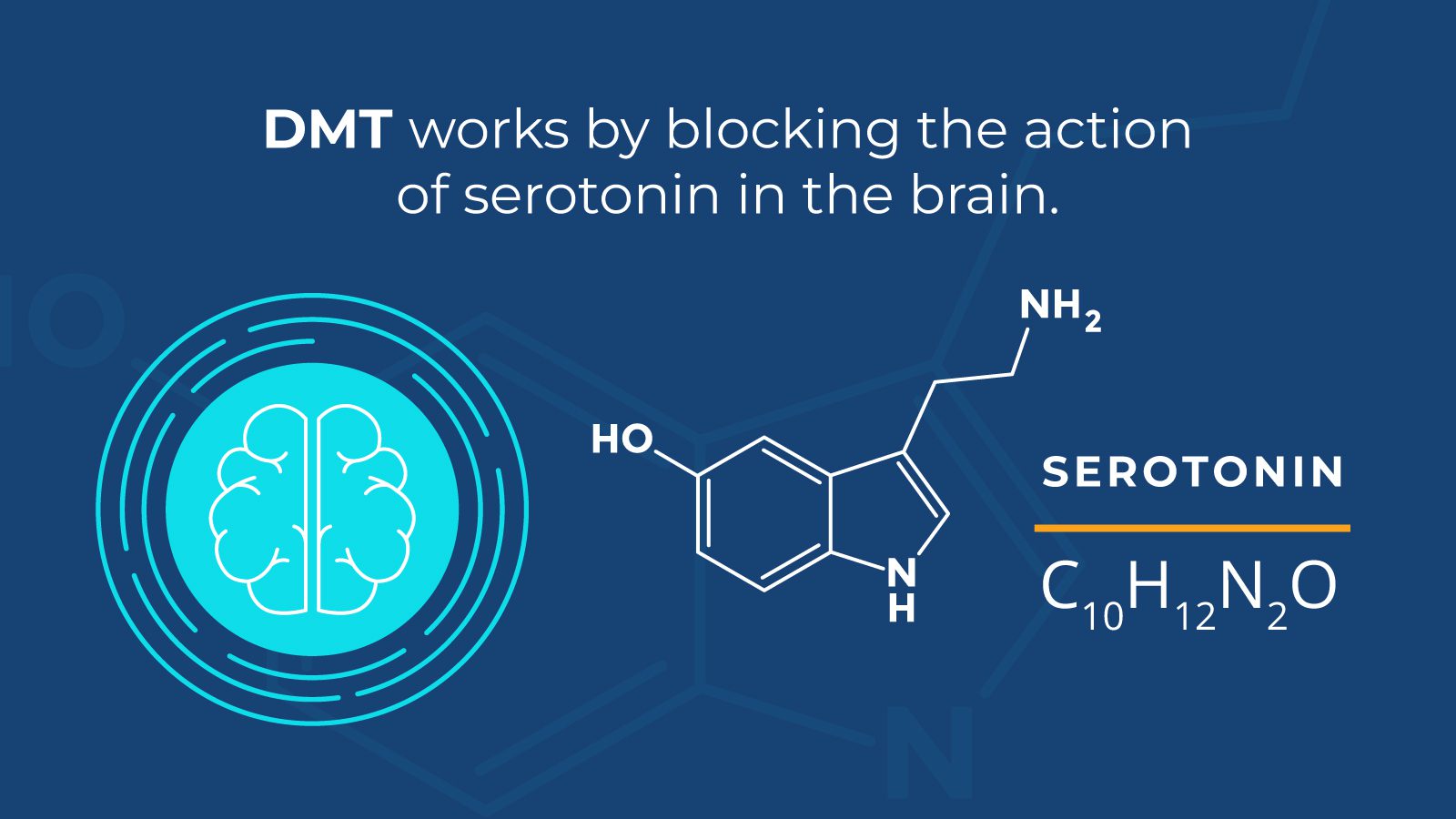Pharmacology Behind DMT
Pharmacology Behind DMT, DMT works by blocking the action of serotonin in the brain.
Tryptamines refer to a broad class of classical or serotonergic hallucinogens. Serotonergic hallucinogens are drugs that affect serotonin, which is a substance that acts as a neurotransmitter and carries signals throughout your body.
Serotonin regulates mood, digestion, sleep, and other important bodily functions. When serotonin levels in your body are too little or too high, it can negatively affect your mental and physical health.
DMT acts as a non-selective agonist at most or all serotonin receptors, specifically at the 5-ht2a receptor.
Stimulation of this receptor may help induce the hallucinogenic effects of DMT. At the same time, the serotonin produced inhibits both dopamine and adrenaline.

Dopamine is a neurotransmitter that is involved in neurological and physiological functions.
Dopamine plays a role in the brain’s “reward center” and impacts functions such as; memory, movement, mood, attention, and others.
The hallucinogenic effects of DMT differ depending on the way it is taken and the dose of DMT.
When DMT is taken alone, it is usually snorted, smoked, or injected.
The effects of DMT come faster when injected through the vein or muscle, as opposed to taking the drug orally.
If DMT is injected, it may leave behind bruising or track marks.
When smoked, the effects of DMT may happen immediately. It is hard to determine how long it takes to reach peak effects when DMT is smoked.
When consumed as a brew in ayahuasca, the effects may take longer and peak around 2 to 3 hours.
When taken orally, DMT has to be combined with a monoamine oxidase inhibitor (MAOI) to break down. An example of an MAOI is the ayahuasca vine. MAOIs intensify the pharmacological effects of DMT.
Side effects of DMT may include:
- Vivid hallucinations
- Depersonalization
- Distorted sense of time
- Increased/rapid heart rate
- Increased blood pressure
- Chest pain or tightness
- Agitation
- Dizziness
- Pupil dilation
There are also serious risks that can potentially come with taking DMT which includes:
- Persistent psychosis
- Confusion
- Seizures
- Loss of muscle coordination
DMT Near me
Psychosis is a symptom characterized by disruptions to someone’s thoughts and perceptions, making it difficult to recognize what is real and what is not real.
According to the DEA and American Association of Poison Control data, coma and respiratory arrest have also been associated with DMT, especially in higher doses.
Many people who have used DMT have reported that their experience is life-changing. This can include mystical encounters or near-death experiences.
Frontiers in Psychology describe near-death experiences (NDEs) as episodes that occur in association with death or the perception that death is about to come.
To determine the degree to which DMT induces NDEs, a rating scale was created called the NDE scale.
According to this scale, the results suggest a strong overlap between DMT AND NDEs.
The use of psychedelic drugs may also cause something called ego death. Ego death refers to momentarily forgetting who you are and what everything is. This can lead to a drastic change in someone’s perception of life.

